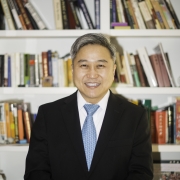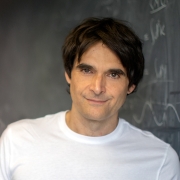Chemists Establish Fundamentals of Ferroelectric Materials
Ferromagnetic materials are useful because their magnetic polarization makes them rotate to align with magnetic fields. Since external electric fields can reorient the electric polarization of these materials, they are ideal for certain memory applications, such as stored-value cards used in mass-transit systems. Because changes in their polarization cause such materials to physically change shape, ferroelectrics are also crucial “smart materials” for a variety of sensors, such as ultrasound machines and probe-based microscopes. They could even be used as nanoscale motors.
In a new study published in Nature, Andrew M. Rappe, Blanchard Professor of Chemistry, and lab members Shi Liu and Ilya Grinberg demonstrate a multiscale simulation of lead titanate oxide that provides new understanding about what it takes for polarizations within these materials to switch. This mathematical model, which is built up from the principles of quantum mechanics rather than being derived from physical experiments, will undergird efforts to find and design new ferroelectric materials to specification.
Despite proliferation in commercial applications, there are many gaps in the theoretical principles that explain the behavior of ferroelectric materials. One such gap is in understanding how discrete regions of differing polarizations, known as domains, interact at their boundaries, or domain walls.
The ferroelectric material Rappe and his colleagues simulated features titanium ions inside six-pointed octahedral “cages” of oxygen ions. The polarization of a given domain is determined by which points of the cages the titanium ions move toward.
“If you apply an electric field that's opposite to the direction of the metal atoms’ alignment,” Rappe says, “they want to move and align with the electric field, but they also feel social pressure from their neighbors to stay the same as each other. That means it takes a lot energy for them all to flip their alignment direction at the same time.
Click here to read the full article.





